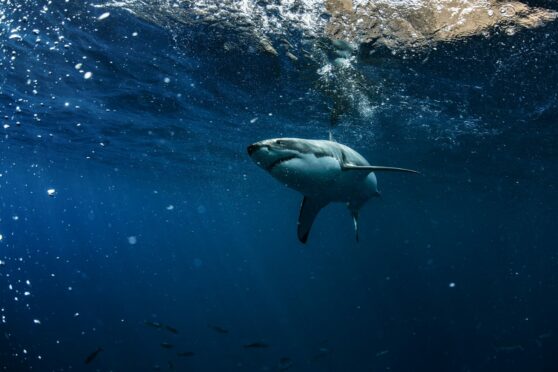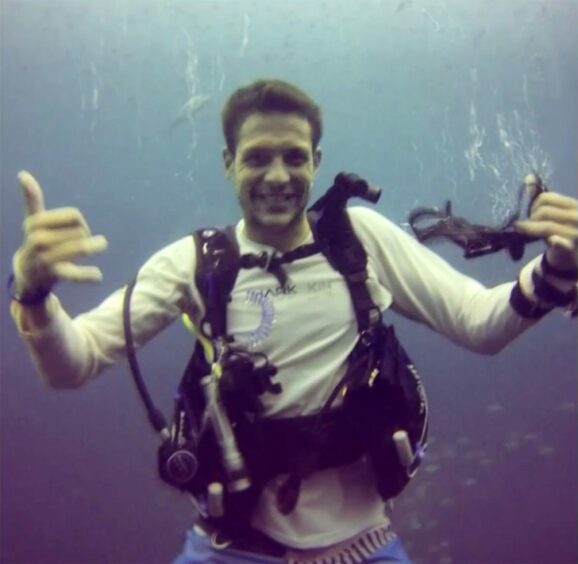
As hundreds of international pro surfers prepared to ride the waves in Sydney’s popular Manly Open Surf Classic last week, the shark alarm sounded. Minutes later, the ocean was empty, surrounding beaches closed, and the competition called off.
Several large bull sharks were mauling a sick dolphin in the shallows and lifeguards were taking no chances. They cancelled the major sporting event and kept beaches closed for a day.
Days earlier, in Western Australia (WA), swimmers in Perth’s northern suburbs cleared the waters as a three-metre tiger shark cruised close to the shoreline. Another giant tiger prompted the closure of a nearby beach when it glided into the shallows earlier in a week that saw close to 90 shark sightings in WA, Australia’s deadliest coastline for shark attacks.
The risk-averse approach follows news that sharks are biting humans more often, according to a new dataset on shark incidents. The Australian Shark Incident Database, collated by Sydney’s Taronga Conservation Society, documents all known attempts by sharks in Australia to bite humans.
Some end in death. The most recent, Sydney’s first fatal shark attack in 60 years, sent shockwaves through the city. In February 2022, British expat diving instructor Simon Nellist, 35, was killed by a great white shark three metres long, just 150 metres from the shore of a city beach.
The preceding fatality was in November 2021, in Perth, when another British expat, Paul Millachip, 57, was killed by a great white while swimming at a beach.
Three months earlier, Timothy Thompson, 31, was bitten by a great white while surfing in northern New South Wales. He bled to death on the beach.
While such tragedies generate headlines, sadness and horror, shark scientists are quick to point out they are rare. “Statistics show you are much more likely to be killed by a falling coconut, a horse or taking a selfie than shark bite and, if you’re in the ocean in Australia, you are 300 times more likely to die from drowning than shark bite,” says wildlife conservation officer Dr Phoebe Meagher, manager of the database.
The database confirms shark bite fatalities have remained stable; on average two a year. But what about the increase in non-fatal bites?
Several factors are at play, says shark scientist Dr Leonardo Guida, from the Australian Marine Conservation Society. “Human population growth is the most tangible reason,” he says.
Australia’s population hugs the country’s shorelines, with 90% living within an hour of the ocean. “As that coastal population grows, we’re seeing more people in the water,” Guida says.
Warmer summers caused by climate change are also crowding the waters, says Meagher. “Hotter temperatures mean more people are in the water and for longer, increasing chances of human-shark interaction.”
Climate change is affecting the movements of many marine creatures, including the “big three” sharks most likely to bite humans: white, tiger and bull sharks.
“For example, modelling has shown that by around 2030, bull sharks will be spending longer periods of time in the south because of warming waters,” says Guida. “Climate change means sharks may spend more periods of time in areas that overlap with human use.”
Technology has heightened shark awareness, says Guida. “There’s an inflated sense that there’s more out there, because we have more eyes on the water.”
Recent years have seen advances in shark monitoring and surveillance, with shark-spotting drones providing accurate, real-time information and alerts. In future, say drone developers, AI could even learn to recognise aggressive shark behaviour.
But there may not be much aggression to see. While drone footage often shows sharks close to humans, they tend to swim by. “If there’s one thing drone footage has shown us, it’s that sharks simply do not care about you,” says Dr Guida. “In most cases we coexist without incident.”
Jason Iggleden has been filming the oceans around Sydney’s Bondi Beach daily for five years, sharing aerial footage with his 152,000 Instagram followers and on his Drone Shark App. He’s never seen an aggressive move by sharks on humans. “What it shows is that every day there are countless interactions between sharks and humans we never hear about,” he said. “We see hammerheads, grey nurses, bronze whalers and seals cruise past swimmers and surfers without blinking.”
Contrary to their Hollywood image, say those who study them, sharks do not prey on humans. “Most bites are a case of the animal being curious, not sure what it is, and then realising it’s not what they wanted,” says Guida.
While never diminishing the tragedy of those experiences, Meagher is relieved that “monster of the deep” stereotypes popularised by the movie Jaws are subsiding. “People who enjoy the ocean have a very practical perspective on shark bite risk, knowing it is the sharks’ territory and sometimes we are the right size at the wrong time. It’s about a healthy respect.”
In the year 2000, Jaws writer Peter Benchley penned an open letter to Australia, pleading for clemency for sharks in the wake of a fatal shark attack.
“When I wrote the book and film … we believed that sharks actually attacked boats; we believed that they actively sought out human prey. We believed that their numbers were infinite and the threat they posed incalculable,” he wrote.
Last year, Stephen Spielberg expressed similar remorse, apologising for a decimation of the US shark population he believes was caused by shark hunting sprees inspired by the movie.
We now know that, rather than man-eating monsters, sharks are among the many ocean species under pressure.
Last week, a news investigation revealed meat from endangered shark species was being sold as fish and chips in South Australia. And the shark finning trade kills an estimated 100 million per year.
“A third of shark species are listed as endangered,” says Meagher.
Despite nervousness around beaches, the majority of Australians are against harming sharks, and there’s growing opposition to lethal shark control measures, such as shark nets. “Around 70% of people don’t want sharks killed for the sake of human safety,” says Guida. “They understand there are non-lethal solutions that reduce the risk of a shark bite.”
He says these include new barrier technology, combined with better education and more drone surveillance.
In the meantime, it’s safe-(ish) to go back in the water.

Enjoy the convenience of having The Sunday Post delivered as a digital ePaper straight to your smartphone, tablet or computer.
Subscribe for only £5.49 a month and enjoy all the benefits of the printed paper as a digital replica.
Subscribe © Shutterstock
© Shutterstock